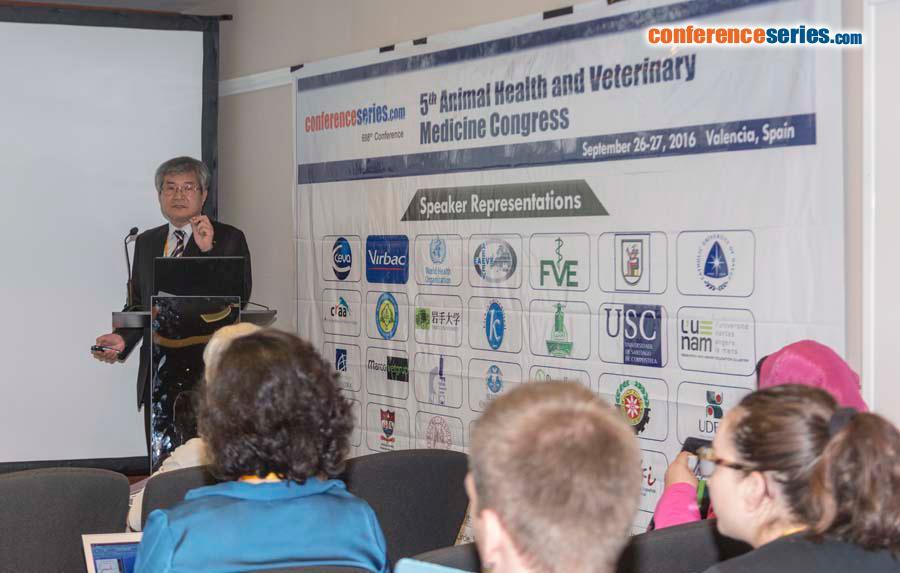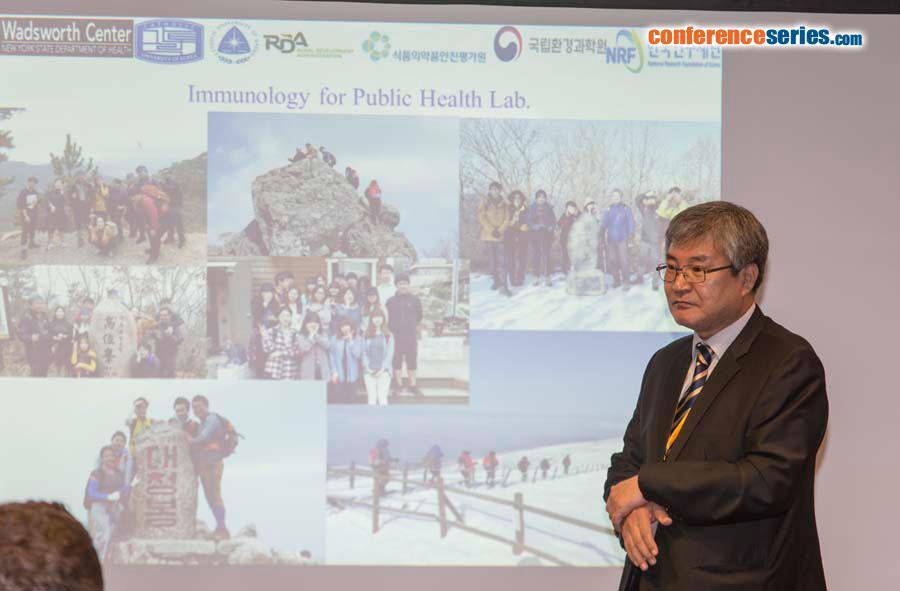
Yong Heo
The Catholic University of Korea, Korea
Title: Relationship between cattle cellular immunity and endotoxin levels in dust from cattle housing environments
Biography
Biography: Yong Heo
Abstract
Hazardous biochemical agents in animal husbandry indoor environments are known to promote the occurrence of various illness among husbandry workers and animals. The relationship between endotoxin levels in dust collected from Korean beef cattle farms and various immunological markers on bovine cellular immunity was investigated. Peripheral blood was obtained from 25 cattles from five different beef cattle farms in Korea. Concentration of total dust in indoor of the animal farms was evaluated using PVC membrane filter with 37 mm cassette at flow rate of 2.0 liters/min for 8 hours. Endotoxin levels in the total dust were determined by the Limulus Amebocyte Lysate Kinetic method. Microbial air samples were collected by the use of Cascade Impactor onto petri dishes with bacteria or fungi growth media. Cytokine production was evaluated through stimulation of peripheral mononuclear cells (106 cells/ml) with Concanavlain A (5 microgram/106 cells) for 72 hours in 5% CO2 incubator. Interferon-gamma versus interleukin-4 ratio, an immunological paramter for helper T cell subtype skewedness, was substantially lower in cattles from the two farms with higher endotoxin ceonecntrations (100.940.7 EU/m3) than the cattles from the three farms with lower endotoxin levels (17.78.3 EU/m3). Phenotyping analysis through FACS for peripheral mononuclear cells demonstrated significantly lower percentage of WC1+ gamma delta T cell, an imporant immune cell for protection against microbial infection, in cattles (9.71.7%) from the farms with higher endotoxin level than those (15.02.3%) from the farms with lower endotoxin level. Prevalent microorganisms were Gram positive bacteria; Staphylococcus lentus, S. chromogenes, Bacillus cereus, B. licheniformis, and Enterococcus faecalis, and Candida albicans and Acinetobactor iwoffi for fungi and Gram negative bacteria, respectively. Overall, these results suggest a probable negative association between dust endotoxin levels and cell-mediated immunity in Korean beef cattles.






